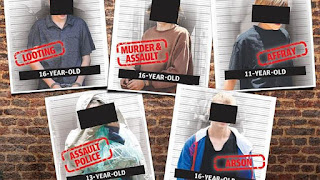Juvenile Delinquency and Culture….!
“No one is born as a criminal, but are made criminals”
Juvenile: A boy or girl child under 18 years of age is a juvenile or
child under section 2(k) JJA 2000.Delinquency: a kind of abnormality when an
individual deviates from the course of normal social life. Juvenile Delinquent:
a juvenile who is alleged to have committed an offence and has not completed 18th
year of age as on the date of commission of such offence (section 2(l) JJA
2000).It Includes Violent Crimes, Drug &
Alcohol Violations, Sexual Offences and Status Offence. What are reasons for delinquent behavior? It includes Social disorganization, Family environment, Increase
in standard of living, for seeking attention, Attraction towards money and
luxuries, Influence of media, Influence of video games, Strain and stress, Labelling
and Mental disorders. The above reasons may affect the mentality of teens and promote
him /her to do crime in this age. The delinquency rate is higher among the boys
than the girls. The age group that produces the most juvenile delinquents is
between12-16 years. Low educational background is one of the main reasons for
juvenile delinquency.
Juvenile delinquents are found more in urban areas. Poor economic
background is also another important cause for youth offense in India. The
changing lifestyle is most effect on the behaviors of teens. At the small age
they used to addict toward the drugs and alcohol that may lead to the juvenile delinquency.
Managing the status symbol, giving the freedom and become a modern parents to fulfill
the generation gap sometime parent also promote to their child for such
addictions. Parents also responsible for this type of crime because due to
their managing lifestyle may spoiled their child future.
I found some solution on that just look….! Behavior therapy is focused on helping an individual understand how
changing their behavior can lead to changes in how they are feeling. The goal
of behavior therapy is usually focused on increasing the person’s engagement
in positive or socially reinforcing activities. Activity therapy is a healing
technique that is often employed with people overcoming physical addictions or
emotional issues. The main focus of the therapy is to engage the individual in
creative endeavors that help to alter the thought processes of the patient in
a positive manner. Activity therapy may take place between a therapist and a
single patient or be utilized in a group environment. Juvenile
Delinquency is one of the major rising concerns in the world and in India. NGOs
as well as the Government have taken drastic measures to control the
overgrowing cases of juvenile delinquency and hopefully someday, we will see a
new world where the innocence has been restored.





